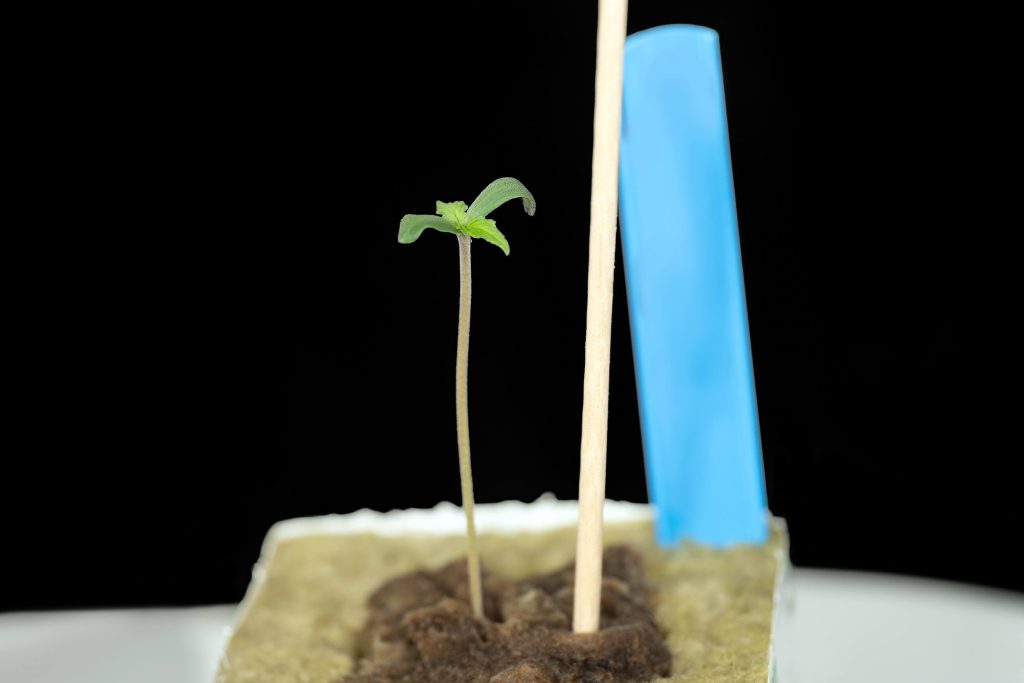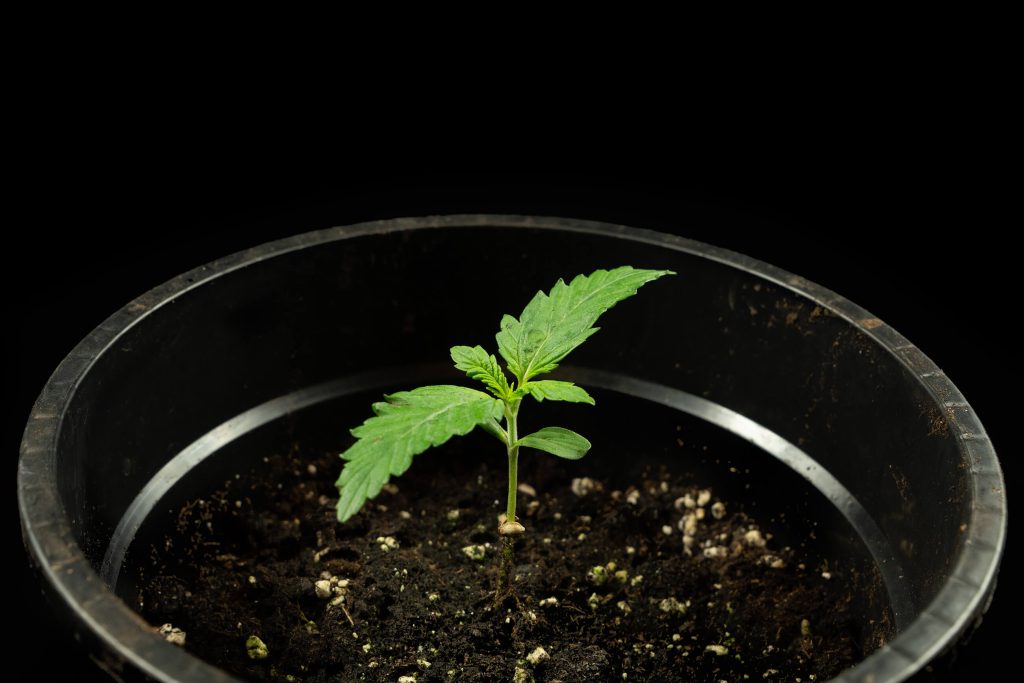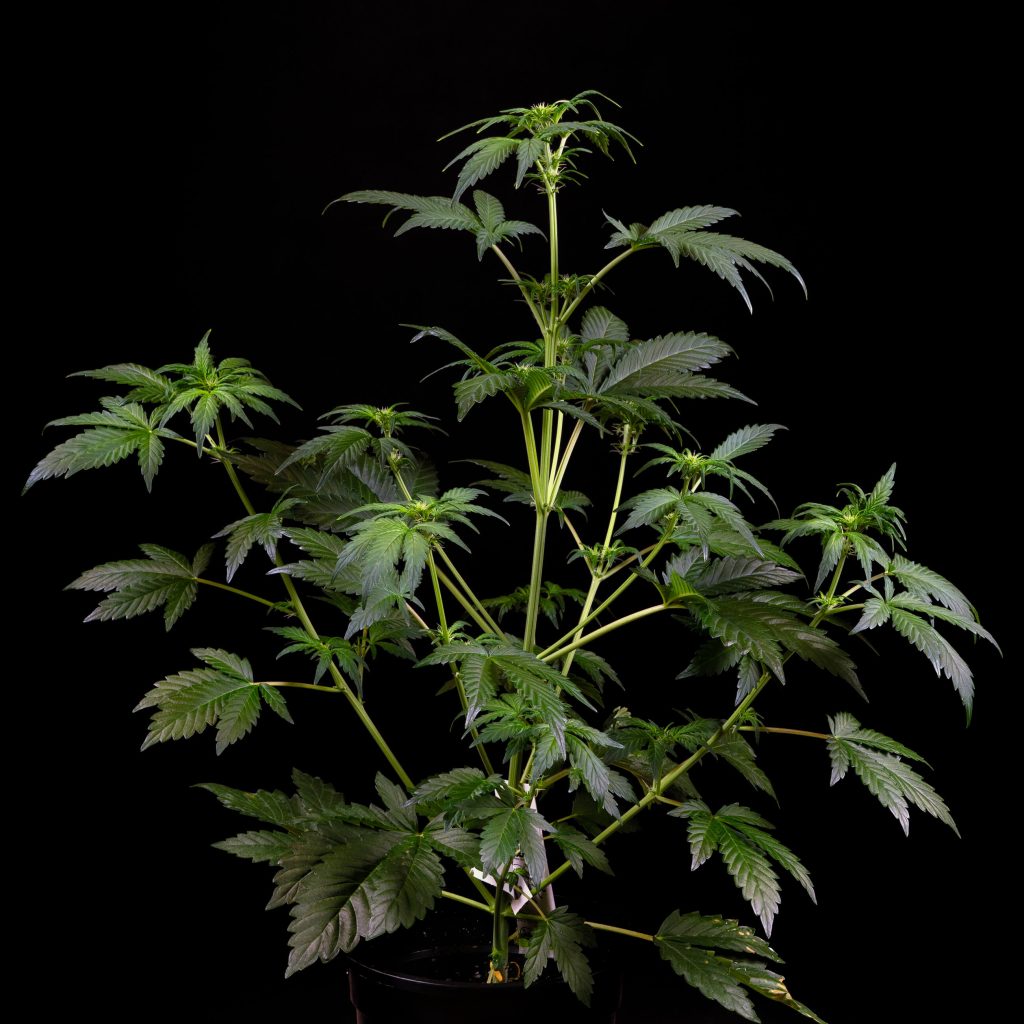Explore our grow report detailing the growth cycle of Sweet & Sour Cream Automatic, from germination to harvest. This versatile hybrid, created by crossing Sour Florida OG and Gelato #420, showcases a compact size and abundant yields. Now, let’s delve into our detailed step-by-step guide; with any luck, you’ll pick up some expert tips along the way!
Flowering stage: 63 days
Total time, seed to harvest: 91 days
Final yield: 102 grams
THC content: 23.2%
In 2024, Sensi Seeds Research introduced Sweet & Sour Cream Automatic into their catalogue, a strain blending Sour Florida OG and Gelato #420. Anticipate a compact structure featuring short internodal spacing, sturdy branches, and vibrant green foliage. This cultivar typically forms a single large cola with minimal lateral branches, and we couldn’t wait to start our cultivation cycle with this exciting addition!
We cultivated the Sweet & Sour Cream Automatic in our controlled indoor growing space, maintaining a consistent temperature of 23°C during the day and 21°C at night. To optimize air circulation, we placed oscillating fans equipped with a carbon filter and intake fan. Throughout the various growth stages, we carefully managed humidity levels, tailoring them to the specific requirements of each phase. At the initiation of the cycle, we deliberately set the humidity at 65%.
For our growing medium, we used BAC Lava soil, supplemented with Bio Grow and Bio Bloom nutrients throughout the cultivation cycle. Opting for optimal illumination, we chose the 1000W Green Power Philips HPS light. In the vegetative stage, we maintained a lighting schedule of 18 hours on and 6 hours off, transitioning to a balanced 12 hours on and 12 hours off during flowering.
Germination & seedling
Our cultivation journey began by germinating our Sweet & Sour Cream Automatic seed in a propagation cube 80 cm below the grow light. As soon as roots emerged, we carefully transplanted our 6 cm seedling into a 3-litre pot filled with a BAC Lavasoil mix. Witnessing the onset of leaf development, our plant showcased robust cotyledons and two vibrant leaves.
We abstained from watering until the third day, when we poured 100 ml of water around the main stem to foster robust root growth. We carefully adjusted the pH to 6.2 upon watering, incorporating a root stimulant to achieve an EC of 0.8. Our proactive approach extended to pest management, as we introduced Amblyseius Cucumeris and Amblyseius Californicus predatory mites to address potential issues.
Vegetation
By the end of the second week, our Sweet & Sour Cream Automatic exhibited remarkable growth, doubling in size and reaching an impressive height of 11 cm. Evolving from cotyledons to broad-fingered leaves, the plant displayed distinct indica characteristics with multiple nodes and short internodal spacing. We increased our watering volume to 200 ml and elevated the EC levels to 1.4 in response to the heightened root development.
As a part of our organic pest management strategy, we introduced Neoseiulus Californicus and Amblyseius swirskii into our indoor garden. These beneficial predators play a crucial role in eliminating the risk of unwanted insects. Since our plant was still developing and we couldn’t hang them on the branches, we hung them on stakes close to the main stem.
As we progressed into the third week of cultivation, we adjusted our watering regimen to deliver precisely 400 ml of water, with a strategic emphasis on the base of the stem. Observing our Sweet & Sour Cream at this stage, it stood at an impressive height of 21 cm, exhibiting three well-defined nodes along its main stem. The plant’s growth was notably robust, characterised by luxuriant, dark green leaves that added to its overall vitality and visual appeal.
Flowering
During the fourth week, the vigorous growth of our cultivation prompted us to enhance the solution volume to 400 ml, providing ample support for the expanding root system. At a height of 28 cm, our Sweet & Sour Cream displayed a more robust mainstem, adorned with an impressive array of over seven nodes, fortified by the continual gentle breeze from the oscillating fans.
This plant is an automatic strain, meaning it doesn’t require the traditional 12 hours on / 12 hours off lighting schedule to grow. However, we grew this plant alongside other varieties and anticipated potential vertical growth. Due to the limitations of our cultivation area, we delicately adjusted the light schedule to a balanced 12 hours on and 12 hours off to usher the plant into the flowering phase. We transitioned from Bio Grow to Bio Bloom nutrients to account for the elevated potassium levels.
In the fifth week, we augmented the solution volume to 800 ml per application, maintaining a strength level of 1.7. Additionally, rather than solely watering the base of the stems, we ensured comprehensive coverage of the entire soil surface. It had been a while since we introduced Neoseiulus Californicus and Amblyseius swirskii to our indoor garden. This time, as our Sweet & Sour Cream was more developed, we hung sachets from the branches in the lower canopy.
In its sixth week of growth, the apical main stem boldly extends beyond the lateral branches, and our plant has surged to a height of 46 cm. The dark green leaves proudly indicate an optimal nitrogen level, accentuating the plant’s health. As we transition into the flowering stage, the pre-bud sites are visibly swelling, adorned with tufts of emerging white hairs that lay the foundation for promising bud development, and we increased EC levels to 1.8 for the remainder of the grow cycle.
Sweet & Sour Cream reached 52 cm during the seventh week. Responding to its increasing needs, we’ve adjusted the water volume to 1500 ml. Notably, the tiny stigmas emerging from the bracts are showing continued development. The buds are now stacking on themselves, effectively closing the internodal spacing. Every lateral branch is flourishing, and it appears that we are poised for a substantial harvest.
Our plant underwent substantial vertical growth throughout the eighth week, extending impressively from its initial height of 50 cm to a remarkable 61 cm. The plant was a true sight to behold, with its dense and sturdy apical mainstem commanding attention. The buds had developed into a substantial size, with olive green hues and delicate white pistils.
The foliage was a lush and vibrant dark green, creating a beautiful contrast against the buds. And to top it all off, the leaves were pointing upwards in a prayer-like stance, as if in gratitude for the plant’s bountiful growth. To promote better airflow within the lower canopy, we removed larger fan leaves and introduced new Neoseiulus californicus and Amblyseius swirskii sachets throughout the canopy. We maintained consistent pH and EC levels and kept the water volume at 1500 ml.
In the ninth week, our Sweet & Sour Cream exhibited ongoing growth, expanding notably by 10 cm and attaining a substantial height of 71 cm. Notably, a delicate fragrance permeated the growing area, characterised by a distinctive and pungently sweet floral scent. The visual aspect of the plant appeared unrestrained and wild, with its limbs and fan leaves extending in diverse directions, creating an impression of exuberant and rampant growth.
As we reached the tenth week, our plant’s growth spurt stopped, and it stood tall at 77 cm. The plant was now focusing on developing its buds, and we could see the calyxes swelling and trichome production increasing. Additionally, the pistils on the plant were starting to change colour. During this week, our EC level increased to 1.8, where it would remain for the rest of the cycle, while the humidity remained constant at 60%.
The buds in the lower canopy have started to swell and are developing into larger-sized buds during the eleventh week. As the bud production was at its peak, we reduced the humidity levels to 56%. The buds displayed a captivating olive-green hue, adorned with a mesmerising glisten from the abundant trichomes. The sparse but noticeable amber pistils created a visually dynamic and aesthetically pleasing composition among the lush greenery.
Even though the growth cycle was almost complete, we decided to add another round of predatory mites to protect our Sweet & Sour Cream during the final weeks of flowering. A pest outbreak at this stage could be devastating, and by the end of the week, our plant had grown to 80 cm in height.
As we entered week twelve, the buds presented a pristine white appearance, veiled in a blanket of shimmering trichomes. Exhibiting a structure reminiscent of sativa strains, there was a subtle openness between the buds, allowing for adequate airflow, yet they artfully stacked upon each other. This unique combination of traits promised a harvest characterised by both quality and aesthetic appeal.
As the thirteenth week commenced, the eagerly awaited harvest period finally arrived. Throughout 91 days, our Sweet & Sour Cream Automatic underwent robust and vigorous growth, reaching a remarkable height of 84 cm. The dense clusters of elongated conical buds artfully entwined themselves, creating intricate and stacked formations with distinctive pointed calyxes and bright orange pistils, further adding to the visual allure of the plant.
Harvest
Preparing for harvest, we assessed trichome colour with a jeweller’s loupe, targeting 70% milky white and 30% orange or amber. We removed large fan leaves to prevent excess moisture. Using pruning scissors, we cut the plant an inch from the base, separated smaller branches, and individually hung them. The plant was then transferred to a controlled drying area at 21°C with 50% humidity and hung upside down.
The buds were dried for 14 days to obtain a nearly crisp exterior while preserving moisture. To confirm the completion of the drying process, we performed a simple check by bending the small branches of the buds. They snapped when bent, indicating they were ready for the next step. This tip is helpful to ensure the buds are thoroughly dried.
After drying, we carefully trimmed off excess fan leaves and put the buds into air-tight containers ready for the cure. As a tip for beginner growers, it is recommended that you break larger colas into smaller buds before storing your dried flowers in airtight glass jars. For the first few weeks, we burped the jars daily and then weekly for the remaining three months. After weighing our harvest, we obtained __ grams. Lab tests revealed a THC content of 23.2% in our Sweet & Sour Cream strain.
Terpene profile
A distinct floral fragrance delicately filled our grow room as the Sweet & Sour Cream entered its final flowering weeks. However, once cured, the intricate terpene profile unveiled a robust diesel aroma interwoven with subtle gas undertones and a potent skunky scent!
We ground our cured flowers in a grinder, grabbed an unbleached rolling paper and carefully rolled a fat joint, passing it around to our friends. As its flavour profile unfolds, subtle hints of sourness emerge, adding a layer of complexity to the overall taste. The strain revealed its rich character with a highly pronounced gassy flavour upon consumption, further intensified by prominent zesty citrus notes.
As the effects settled in, a pleasantly uplifting cerebral euphoria brought forth feelings of happiness, sparked creativity, and enhanced concentration. The experience’s notable potency was coupled with a delightful and pervasive sense of cheerfulness, fostering a laid-back and communal atmosphere for everyone involved.
The outcome
Over a period of 91 days, we were able to yield an impressive amount of grams using our Sweet & Sour Cream Automatic. This particular strain was grown indoors and proved to be low-maintenance, yet remarkably robust throughout the entire cultivation cycle. With an impressive parental lineage and a delightful blend of sweet and sour flavors, the Sweet & Sour Cream Automatic is an excellent choice for cannabis enthusiasts.
Feel free to share any tips or questions about Sweet & Sour Cream Automatic in the comments below.
-
Disclaimer:Laws and regulations regarding cannabis cultivation differ from country to country. Sensi Seeds therefore strongly advises you to check your local laws and regulations. Do not act in conflict with the law.
- SEO Powered Content & PR Distribution. Get Amplified Today.
- PlatoData.Network Vertical Generative Ai. Empower Yourself. Access Here.
- PlatoAiStream. Web3 Intelligence. Knowledge Amplified. Access Here.
- PlatoESG. Carbon, CleanTech, Energy, Environment, Solar, Waste Management. Access Here.
- PlatoHealth. Biotech and Clinical Trials Intelligence. Access Here.
- Source: https://sensiseeds.com/en/blog/sweet-sour-cream-automatic-grow-report/








